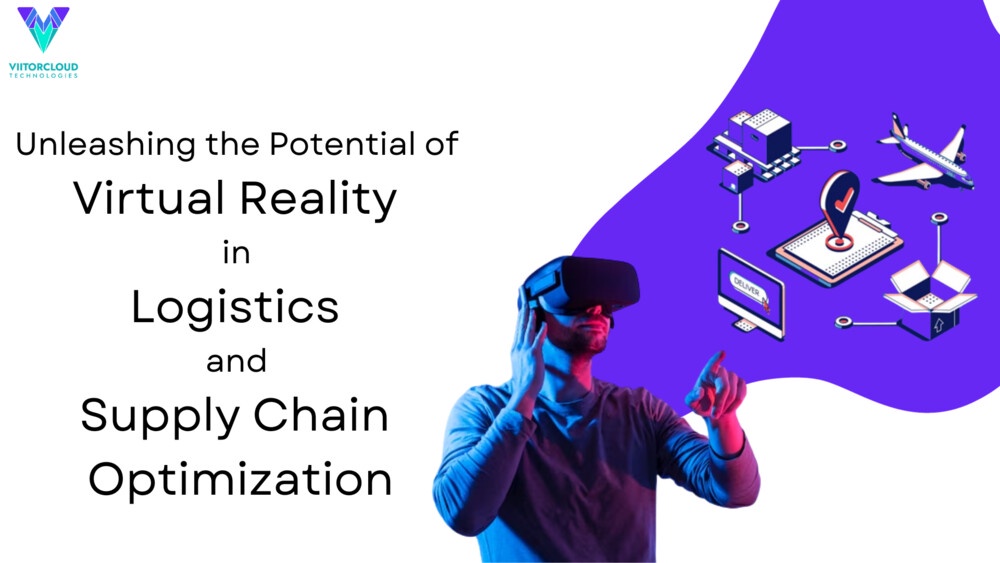Discover the transformative power of Virtual Reality (VR) in revolutionizing logistics and supply chain operations. Explore the definition, benefits, applications, challenges, and real-world case studies of VR solutions for enhanced efficiency, improved safety, cost reduction, and elevated customer experiences.
In today’s rapidly evolving and highly competitive business landscape, the optimization of logistics and supply chain operations has become increasingly paramount.
Delve into the realm of Virtual Reality (VR) solutions for the supply chain, exploring their definition, advantages, applications, challenges, and real-world examples.
Virtual Reality Logistics, also known as VR Logistics or VR in logistics, refers to the utilization of virtual reality technology to streamline and enhance various facets of supply chain management.
VR solutions for the supply chain involve the utilization of VR headsets and software to create immersive, three-dimensional simulations that replicate real-world logistics scenarios.
What Constitutes a Virtual Reality Logistics Solution?
A Virtual Reality Logistics solution is a comprehensive system that combines VR technology with supply chain management.
It presents a virtual environment enabling users to visualize, interact with, and analyze diverse logistics processes and scenarios.
Virtual reality logistics solutions employ VR headsets and software to create immersive environments that replicate real-world logistics operations.
Users can navigate these virtual spaces, monitor processes, and make informed real-time decisions.
Optimizing Logistics and Supply Chain Operations with VR
VR plays a pivotal role in optimizing logistics and supply chain operations by providing real-time data, fostering collaboration, and enabling precise planning.
VR solutions for the supply chain enhance visibility, reduce errors, and ensure seamless operations throughout the supply chain.
Comparison Between Virtual Reality Logistics Solutions and Traditional Solutions
Compared to traditional logistics solutions, VR logistics solutions provide a more immersive and data-rich experience. They offer a real-time, 360-degree view of operations, enabling superior decision-making and optimization. In contrast, traditional solutions often rely on static reports and historical data.
Advantages of Virtual Reality Logistics Solutions
VR solutions for the supply chain offer a plethora of benefits that positively impact various aspects of logistics and supply chain operations.
Enhanced Efficiency in Logistics and Supply Chain Operations
One of the key advantages of Virtual Reality logistics solutions is improved efficiency. Businesses can monitor and optimize their logistics processes, reducing delays, and ensuring prompt delivery of products.
Augmented Safety in Warehouse and Transportation Management
VR solutions for supply chains can be leveraged to train employees in safe and efficient logistics operations, minimizing the risk of accidents and injuries.
Furthermore, they enable the simulation of hazardous scenarios without real-world consequences.
Cost Reductions in Logistics and Supply Chain Operations
By identifying and addressing inefficiencies, Virtual Reality logistics solutions can lead to significant cost reductions in transportation, warehousing, and inventory management.
Enhanced Customer Experience through Improved Delivery Times
Faster and more accurate deliveries result in enhanced customer satisfaction, fostering increased loyalty and positive reviews.
Challenges and Limitations of VR Solutions for the Supply Chain
While Virtual Reality logistics solutions offer numerous benefits, they are not without challenges. Key limitations and obstacles include:
High Initial Costs: Implementing VR technology can be costly, encompassing the procurement of VR headsets and software.
Complex Integration: Integrating VR logistics solutions into existing systems can be intricate and may necessitate specialized IT expertise.
User Training: Employees may require training to effectively utilize VR technology.
Data Security: Safeguarding sensitive supply chain data in a virtual environment is crucial.
Overcoming these challenges entails meticulous planning, cost-benefit analysis, and selecting suitable technology partners. With proper training and data security measures in place, many businesses have successfully implemented VR logistics solutions.
Applications of Virtual Reality Logistics Solutions
VR solutions for the supply chain leverage their immersive and interactive nature to optimize various aspects of the supply chain.
Warehouse Management and Optimization
VR logistics solutions can optimize warehouse layouts, track inventory, and enhance the efficiency of storage and retrieval processes.
Transportation Management and Optimization
In transportation, VR aids in route planning, vehicle tracking, and load optimization, ultimately reducing costs and improving delivery times.
Employee Training and Simulation
Virtual reality serves as a valuable tool for employee training, particularly in safety procedures, equipment operation, and emergency response.
Delivery and Last-Mile Optimization
For last-mile delivery challenges, Virtual reality in logistics assists in route planning and navigation, ensuring packages reach their final destinations more efficiently.
Real-World Case Studies of VR Logistics Solutions
Exemplary Businesses that Successfully Implemented Virtual Reality Logistics Development:
Walmart: Through VR simulations, Walmart trains employees in various logistics scenarios, resulting in safer and more efficient operations.
DHL: DHL utilizes VR to optimize route planning for delivery trucks, reducing fuel consumption and emissions.
Amazon: Amazon employs VR to simulate the loading and unloading of trucks in its warehouses. This VR simulation helps identify and eliminate potential bottlenecks in the order fulfillment process.
These businesses have reported improved efficiency, enhanced safety, cost reductions, and increased customer satisfaction as direct outcomes of implementing VR solutions for the supply chain.
Conclusion
Virtual Reality solutions have the potential to revolutionize logistics and supply chain operations. Connect with ViitorCloud’s potential AR/VR developers and turn your ideas into the reality of VR.


No comments yet